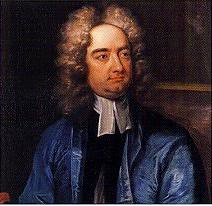The phrase “Renaissance man” tends to conjure up images of Italians in tights, like Leonardo da Vinci, or that tireless fifteenth-century self-promoter Leon Battista Alberti. Yet the real early modern masters of a thousand arts seem to have come from parts farther north. Peter Paul Rubens was famously both a student of philosophy and a diplomat as well as painter, but no artist may have diversified his talents as widely as the elder Lucas Cranach (1472-1553), mayor of Wittenberg, tavern keeper, and, more than incidentally, court painter for more than half a century to the Electors of Saxony. Cranach is best known now, as he was in his own day, for his paintings of women—impossibly long-legged coquettes with catlike eyes and purring expressions, one of whom, a
Venus clad in nothing but a red velvet hat and a gossamer veil, is the centerpiece of a special exhibition being staged this winter within the permanent collection of Rome’s
Borghese Gallery.\
Cardinal Scipione Borghese, a collector of rare taste, apparently acquired his Cranach Venus from a Venetian family in 1611, along with a Venus of similar dimensions (slightly under life size) created at almost the same moment by the sixteenth-century Italian painter Andrea del Brescianino. The Cardinal intended from the first to show the German and the Italian beauties side by side, all the while reminding his guests, in various offerings of Latin verse, that his own priestly vows compelled him to avoid the worldly temptations that Venus symbolized. Brescianino’s Italian goddess (c. 1525–1531) is nothing if not statuesque, from her robust contrapposto stance to the marble-like smoothness of her complexion; she even stands in a niche, flanked by two mischievous Cupids, as if she were a sculpture slowly coming to life. The soft oil paint of her surface shimmers with silvery highlights, producing a contrast between strong line and velvety texture that led Borghese to believe his Venus must have been painted by a much more famous artist, the Florentine master Andrea del Sarto. Her only ornament, aside from her beauty, is her elaborate classical coif.

Galleria Borghese
Lucas Cranach: Venus with Cupid the Honey Thief, 1531
Cranach’s Venus (1531), on the other hand, is anatomically improbable, and clearly painted, down to skin so translucent that the veins show through at her temple, but it is impossible to see her graceful, almost dancing, figure as anything but startlingly lifelike. A few details of dress set her off as divine: the red velvet hat with its white ostrich plumes, a necklace of golden peapods circling her flawless throat, each one bursting with plump peas that are really black pearls, a hair net set with white seed pearls, and the diaphanous stole that underlines her nonchalance and conceals nothing. Her eyes are languid, her smile is positively lascivious, and the only obstacle to seeing her as the perfect goddess of sex is the homely, petulant little boy who whimpers by her side—for her inconvenient son, Cupid, has snatched a honeycomb and been stung by one of the bees that crawl so convincingly over its dripping surface. A little Latin elegy tells us that love is like this:
As little Cupid robbed the hive of honey
A bee transfixed his finger with a sting;
So, too, our search for fleeting, short-lived pleasure
Is mixed with wretched pain and does us ill.
(And how often, Cranach seems to suggest, divas produce bratty offspring.)
Lucas Cranach: A Different Renaissance is the fifth of ten ingenious temporary shows designed to highlight different aspects of the Borghese collection, itself one of Rome’s chief marvels ever since its assemblage at the beginning of the seventeenth century. (Earlier entries in the series have been highly successful, and colorfully various: the fourth, for example, paired
Caravaggio with the twentieth-century painter
Francis Bacon.) Here, the comparison between the two Venuses is only one of a whole set of parallels that the Borghese Gallery has set up between Cranach’s works and those of his Italian contemporaries, most intriguingly, perhaps, with the superbly eccentric Venetian painter Lorenzo Lotto. The misty crags that recede into the deep distance behind their figures seem, with some reason, to belong to the same Alpine landscape, and both painters are shown to exhibit an astonishing versatility, often within a single image, as for example, in Cranach’s elaborate royal hunts, where fantastic landscapes combine with a whole series of beguiling miniature portraits (including one of Electress Sibylle of Saxony as a sharpshooter, a sixteenth-century aristocratic version of Annie Oakley).

Galleria degli Uffizi
Lucas Cranach: Portrait of Martin Luther, 1529
Both Cranach and Lotto, moreover, were superb portraitists; indeed, Cranach, a close friend of Martin Luther’s, also became the manager of the reformer’s public image as well as that of the Electors who ruled over Wittenberg when Luther first posted his 95 theses there in 1517. The Borghese gallery arranges small Cranach portraits of Luther and his wife, the former nun Katharina von Bora, alongside matching portraits of Luther’s parents, both generations looking stern and eminently respectable—a respectability that helped significantly to spread the message of the Reformation. The exhibition provides a wealth of suggestive comparisons, not only Lotto, but also, especially, a beautiful little image by the great Sicilian painter Antonello da Messina.
Cranach also invites comparison with his contemporary, Titian, a giant among portraitists and also among painters of allegorical and mythological scenes. Scipione Borghese owned Titian’s Sacred and Profane Love, and a late, exquisite Blindfolding of Cupid—both big, expansive oils on canvas that are temporarily sharing space with some of Cranach’s allegories, which are small and minutely detailed, often aimed at a middle-class market. Both artists shared, along with Rubens and Renoir, a passion for women of every age, shape, and size, women who almost always exert perfect, quiet control over the situations in which they find themselves (although one plump Cranach Lucretia from Kassel, loaded down with three massive gold chains, looks more forlorn and confused than noble as she prepares to stab herself in her fancy new dress with sleeves of row upon row of gold-edged green ribbons).

Museo Thyssen-Bornemisza
Lucas Cranach: Portrait of Charles V
Yet Cranach and Titian approached Charles V, the Holy Roman Emperor, in diametrically opposite ways when they were summoned to Augsburg in 1547 to paint the most powerful man in Europe. They were perhaps the two most successful portrait artists of the era: both acutely receptive to influences from north and south, from Raphael to Dürer, Michelangelo to the great Flemings, and both, by that time, grand, elderly masters of large workshops. Titian’s portraits of Charles (now in the Prado) emphasize the Emperor’s masculine charisma. Cranach, on the other hand, cannot keep himself from recording the Habsburg jaw that made it impossible for the monarch to close his mouth completely. (He also painted Titian; sadly, that portrait does not survive.)
The forthrightness of Cranach’s image suggests a good deal of courage on his part. Shortly before, Charles, a Catholic, had defeated Cranach’s patron, Elector Johan Friedrich of Saxony, and his Protestant forces at the Battle of Mühlenberg. After taking the Elector prisoner and condemning him to death, the victorious Emperor summoned Cranach to his field tent; the old painter prepared himself for the worst. Instead, Charles showed him a picture: for the Emperor and the artist had met before, when Charles was eight and Cranach, together with the imperial tutor, had devised a way to help the boy concentrate as he sat—or better squirmed—for a portrait that no longer survives. Years later, Charles still remembered that encounter; Cranach, too, must have been a presence to reckon with. He is still a presence to reckon with—a real lift for the spirits in this Roman winter.
Lucas Cranach: A Different Renaissance is on view at the Borghese Gallery in Rome through February 13. A dual-language catalog of the exhibition, edited by Anna Coliva and Bernard Aikema, has been published by 24 ORECultura. January 15, 2011 11:50 a.m.




 >br>
>br>









No comments:
Post a Comment